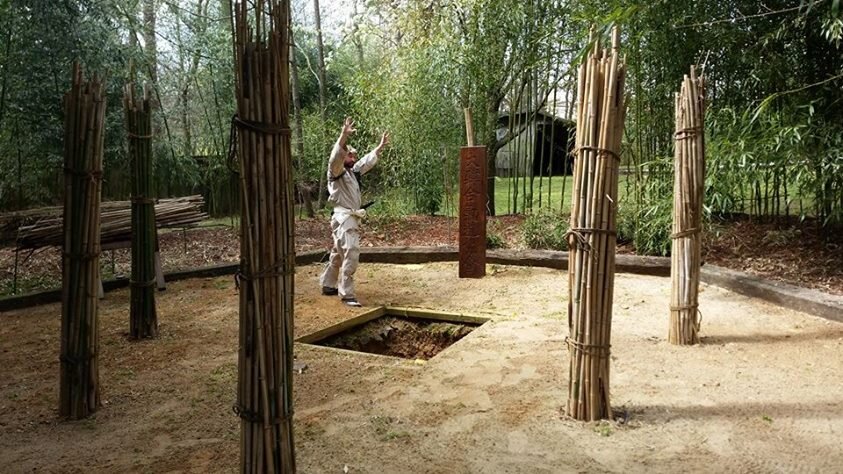
Samrangdo
Ancient Warrior Training
for the 21st Century
Our style is a traditional Korean martial art whose roots extend into the Baekche dynasty. It has been preserved and passed on since 660 AD, and during much of its history, it has been kept secret. Our art is called "Sam Rang Do", and also, "Sam Rang Sool" or "Sam Rang Goon". Multiple lineages converge here, but go back far enough and these lineages all have common roots in China and India.
“Do” means “The Way,” and “Sool” means ”Technique". There is no “Way" without technique, and at the same time, technique without "The Way" is profane. These two concepts will always be connected.
Dojunim Ji Han-Jae mastered Sam Rang in his youth under two teachers known as “Taoist Lee” and “Grandma”. He also studied what was originally called "Yawara" or "Yu-Sool" under Grandmaster Choi, a student of Sokaku Takeda.
These two lineages combined in the style of Ji Han-Jae, the founder of many schools of Hapkido.
Many of the techniques of Ji Han-Jae's lineages of Hapkido have Sam Rang at their foundation, particularly the techniques of special kicks, dong bong, joong bong, archery, the cane, pobak sool and other various techniques called "Teki".
In 2015, the Art was formally passed on to Grandmaster Chris Garland. In 2016, Ji Han-Jae passed on the title of "Doju" to GM Garland, bestowing SamRangDo to GM Garland for preservation of its core values and to pass on the legacy and heritage of the art to future generations.
DOJUNIM JI, HAN JAE
Born in 1936 in Andong, South Korea
DoJuNim Ji, Han Jae attributes three great teachers which led him on his martial arts journey:
He studied under Choi Yung Sool from 1949-1956. Choi is believed to have studied DaitoRyu Aikijujutsu under famous Japanese martial artist Sokkaku Takeda, even though no official records exist of Choi’s attendance at the school. Choi is believed to have brought the Japanese martial art back to South Korea after World War II and taught South Koreans this art along with Ji Han Jae.
He studied with Lee Do-Sa, or Taoist Lee, at age 18. Taoist Lee was also an herbalist and reportedly helped Ji Han Jae’s mother recover from an illness. It was under Taoist Lee that Ji Han Jae learned the ancient kicking techniques of the Sam Rang warriors from the Paekche era of Korea’s history. It is interesting to note that many of the drills Ji Han Jae learned from Taoist Lee resemble several plyometric drills used to enhance jumping in athletes. Taoist Lee also taught Ji Han Jae several weapons systems, including sword techniques, jang bong (long staff), and dang bong (short staff - usually 8 to 10 inches in length).
He studied spirituality and meditation under “Grandma”. “Grandma” honed Ji Han Jae’s mental and spiritual aspects of his martial art.
Notable facts:
Opened his first dojang in Andong at age 21.
Worked as road worker and bridge engineer in Seoul.
Appointed by Park Chung-Hee as a presidential body guard and hired as an instructor at the Korean Military Academy.
Trained secret service and FBI agents in Hapkido techniques in the early 1970’s.
Appeared in several martial arts movies, most notably in Game of Death, starring Bruce Lee.
Was incarcerated in South Korea for one year for his political affiliation.
Moved permanently to the United States in 1984 and founded Sin Moo Hapkido.



